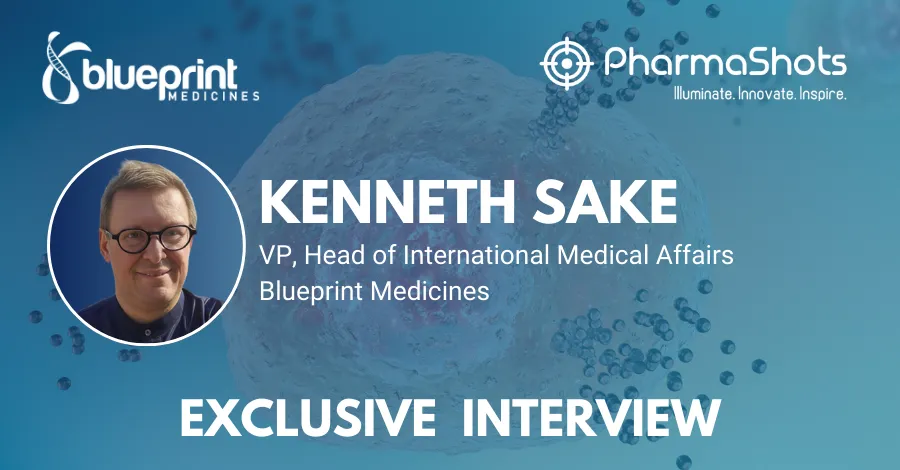
Philip Brown & Anna Tallman of Dermavant Shares Insights on the Approval of its Topical Treatment for Plaque Psoriasis
Shots:
- Philip spoke about plaque psoriasis, symptoms, prognosis, and treatment options available. He also discussed different ongoing patient support programs by Dermavant
- Anna talked about the approval of Dermavant’s lead topical treatment in plaque psoriasis, its clinical studies & results
- The interview summarizes Dermavant’s aim to develop innovative therapeutics in immuno-dermatology to address the high unmet medical needs of the patients
Smriti: Thank you so much for connecting with us. Can we start by knowing a little more about plaque psoriasis (symptoms, unmet needs, epidemiology (the US, EU RoW), demographics (male vs female, adults vs pediatric, etc.)?
“When it comes to finding treatments that work, people with psoriasis may endure a frustrating trial and error process”
Philip Brown: Impacting approximately 8 million people in the U.S. and 125 million people worldwide, psoriasis is a complex and chronic inflammatory disease. The most common form of psoriasis is plaque psoriasis, which accounts for about 80% to 90% of cases. Psoriasis can begin at any age, but symptoms often start between 15 and 25 years of age. In people with light skin, plaque psoriasis is characterized by raised, red, or pink patches of skin with a silvery-white scale. People with black or brown skin are more likely to have brown or violet-colored patches with a silvery-white or grayscale.
The exact cause of psoriasis is unknown. Risk factors and triggers may include genetics or a family history of psoriasis, as well as stress, smoking, heavy alcohol consumption, and cold or dry weather conditions.
Psoriasis treatments are not “one size fits all.” When it comes to finding treatments that work, people with psoriasis may endure a frustrating trial and error process. Currently, most of those who are new to treatment start with topical steroids, which vary in their regimen instructions, are limited by where they can be used on the body, and are often used with forced drug holidays attached. Since only about 20% of psoriasis patients are candidates for biologics, there is a major need for more topical therapies, particularly non-steroids.
Smriti: What are the treatment options available for patients?
Philip Brown: Treatment will depend on the patient and their prescriber. Psoriasis is a complex and chronic inflammatory disease, and treatments aren’t “one-size-fits-all.” Most who are new to treatment start with topical corticosteroids, which are the current standard of care.
If topical corticosteroids don’t work, patients with psoriasis and their healthcare providers may turn to other treatment options, including non-steroidal prescription topicals, over-the-counter topicals, phototherapy, and/or oral or biologic medication; some of these treatments may be prescribed in combination.
Smriti: Let us discuss VTAMA cream. What is it, its MOA, ROA, etc?
Anna Tallman: VTAMA (tapinarof) cream, 1% is a prescription medicine used once daily to treat plaque psoriasis in adults. It contains tapinarof as the active ingredient. Tapinarof is the first and only aryl hydrocarbon receptor (AhR) agonist approved in the U.S. for the treatment of adults with plaque psoriasis. VTAMA cream is backed by extensive clinical trial data supporting its strong safety and efficacy profile — even with long-term use, as demonstrated up to 52 weeks in clinical trials, and on sensitive and difficult-to-treat affected skin areas, such as the face, groin, and underarms.
The specific mechanisms by which VTAMA cream exerts its therapeutic action in psoriasis patients are unknown. However, AhR is found throughout the body, including in immune and skin cells, and is thought to play a significant role in maintaining skin homeostasis. As an AhR agonist, VTAMA cream has been proven safe and effective for the topical treatment of plaque psoriasis in adults.
Smriti: Can we discuss the studies (PSOARING 1, PSOARING 2) which led to the approval of VTAMA cream?
Anna Tallman: In the pivotal Phase 3 PSOARING clinical trial program, VTAMA cream met all primary and secondary endpoints and demonstrated highly statistically significant improvement versus vehicle in Physician Global Assessment (PGA) response with 36% of patients versus 6% in a vehicle in PSOARING 1 and 40% of patients versus 6% in a vehicle in PSOARING 2 achieving a PGA score of clear or almost clear with a minimum 2-grade improvement at week 12 from baseline (p<0.0001 for both trials).
The most common side effects (incidence ≥ 1%) of VTAMA cream include folliculitis (red raised bumps around the hair pores), nasopharyngitis (pain or swelling in the nose and throat), contact dermatitis (skin rash or irritation, including itching, redness, peeling, burning, or stinging), headache, pruritus (itching), and influenza (flu).
Further, 73 patients who achieved complete disease clearance (PGA=0) in PSOARING 1 and PSOARING 2 and entered PSOARING 3, a long-term open-label extension study, stopped VTAMA cream treatment and maintained "clear" (PGA=0) or "almost clear" (PGA=1) for a remittive effect (median time to first worsening (PGA ≥ 2)) of approximately four months off treatment.
Smriti: Let us discuss the unmet need of patients. What is the rationale behind topical application?
“The FDA approval of VTAMA cream in May 2022 results in a welcomed, new treatment option for adult patients”
Philip Brown: When it comes to finding treatments that work, adults living with psoriasis may endure a frustrating trial and error process. Currently, most of those who are new to treatment start with topical corticosteroids. VTAMA cream is not a steroid. It is the first and only steroid-free topical medication in its class in the U.S. to treat adults with plaque psoriasis
After 25 plus years of minimal innovation in the topical psoriasis treatment space, the FDA approval of VTAMA cream in May 2022 results in a welcomed, new treatment option for adult patients, many of whom may have faced a challenging trial-and-error process managing their condition.
Further, more than 6.6 million prescriptions are written in the U.S. annually for psoriasis, and 66% of these are for topical medications. While topical treatments are the preferred route of administration for dermatologists, patients, and payers, orals and biologics drive more than 90% of the psoriasis category drug spend — an unsustainable trend.
We’re extremely proud to offer VTAMA cream as a first-line treatment for adults, with mild, moderate, and severe plaque psoriasis, who may benefit from it.
Smriti: What makes VTAMA unique from other treatment options whether biologics or NCE (oral or IV)?
Philip Brown: No head-to-head studies are available to date to compare VTAMA cream with other treatment options. That said, we are confident in the potential of VTAMA cream, as the first and only steroid-free topical medication in its class in the U.S to treat adults with plaque psoriasis, which can be used without restrictions on body location or duration, as demonstrated for up to 52 weeks in clinical trials.
Smriti: Can you highlight the patient support programs, digital initiatives, and educational programs for HCPs and patients organized by Dermavant?
Philip Brown: Dermavant is committed to making VTAMA cream accessible to all commercial patients through responsible pricing and a patient savings program.
As part of our commitment to ensuring access to VTAMA cream, Dermavant launched a patient savings program called MyVTAMA for eligible commercially insured patients. More information is available at MyVTAMA.com.
We encourage physicians to review the clinical data supporting VTAMA cream’s strong efficacy, safety, and tolerability profile, along with its durability and off-treatment remittive effect at VTAMA.com.
Smriti: What is the timeline for the EU launch and other major geographies?
Philip Brown: VTAMA cream has the potential to make a real difference in the lives of adult patients and healthcare providers by improving plaque psoriasis. It is our goal to evaluate geographic expansion for VTAMA cream globally to help as many patients living with plaque psoriasis as possible.
Smriti: Can we also discuss the other applications of VTAMA i.e., indication expansion, etc.?
“We continue to leverage its active ingredient, tapinarof, to understand how it might be applied to other conditions to help as many patients with dermatological issues”
Philip Brown: VTAMA cream has the potential to make a real difference in the lives of adult patients and healthcare providers by improving plaque psoriasis. We continue to leverage its active ingredient, tapinarof, to understand how it might be applied to other conditions to help as many patients with dermatological issues as possible. In September 2021, we dosed our first patient in a pivotal Phase 3 clinical trial program (ADORING 1 and ADORING 2) for VTAMA cream to treat atopic dermatitis in patients aged 2 years and older. We expect to receive topline Phase 3 clinical trial results in 1H 2023.
IMPORTANT SAFETY INFORMATION
Indication: VTAMA® (tapinarof) cream, 1% is an aryl hydrocarbon receptor agonist indicated for the topical treatment of plaque psoriasis in adults. Adverse Events: The most common adverse reactions (incidence ≥ 1%) in subjects treated with VTAMA cream were folliculitis (red raised bumps around the hair pores), nasopharyngitis (pain or swelling in the nose and throat), contact dermatitis (skin rash or irritation, including itching and redness, peeling, burning, or stinging), headache, pruritus (itching), and influenza (flu).
You are encouraged to report the negative side effects of prescription drugs to the FDA. Visit www.fda.gov/medwatch or call 1-800-FDA-1088.
Please see the full Prescribing Information here.
VTAMA is a registered trademark of Dermavant Sciences, GmbH.
Smriti: Thank you for an informative interview! We at Pharmashots appreciate your valuable time and presence
About Author:
Philip M. Brown

Philip M. Brown, MD, JD is the CMO at Dermavant. He has 25+ years of experience leading clinical development programs. Dr. Brown received MD from Texas Tech University Health Science Center School of Medicine, a JD from the University of Texas School of Law, and a BA from Hendrix College.
Anna Tallman

Dr. Anna Tallman is the Vice President of Medical Affairs at Dermavant. Dr. Anna Tallman combines 20 years of leadership in Medical Affairs with in-depth clinical experience in therapeutic areas including dermatology, infectious disease, central nervous system, and pain. She earned her Doctor of Pharmacy degree from the University of Michigan.
Tags

Senior Editor at PharmaShots. She is curious and very passionate about recent updates and developments in the life sciences industry. She covers Biopharma, MedTech, and Digital health segments along with different reports at PharmaShots.














